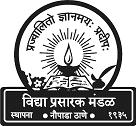 |
|
||||||||||||||
|
|
|||||||||||||||
|
||||||||||||||||||||
29 October 2008 by Anil Ananthaswamy
http://www.newscientist.com/article/mg20026803.900-asian-space-race-is-great-for-science.html
WHEN India's Chandrayaan-1 lunar orbiter reaches its destination on 8 November,
it will join two others - and neither is American, Russian or European. For
the first time, probes from China, Japan and India will be orbiting the moon.
This signals the latest stage in a new space race in which Asian nations are
seeking a place alongside the established space powers. Whatever the motivation
for these missions, the information they gather will greatly expand what we
know about our nearest neighbour. "A wonderful new era of lunar exploration
has opened up," says Richard Vondrak, project scientist for NASA's planned
Lunar Reconnaissance Orbiter at the Goddard Space Flight Center in Greenbelt,
Maryland.
The probes will study the moon in unprecedented detail. By mapping surface features
in 3D, and locating key elements and minerals, they will help identify sites
for future moon bases. Combined with measurements of the moon's gravity field
and remnants of its magnetic field, these observations will also shed light
on its origin and evolution.
The possibility of exploiting lunar resources is one driving force- especially for China and India. "We cannot afford to be lagging behind the US, Russia and China," Madhavan Nair, chairman of the Indian Space Research Organisation, said on Indian television before the launch of Chandrayaan-1.
Yet cooperation, as well as competition, marks out the Indian mission, and the probe's payload includes instruments from the US and Europe. "Scientific exploration is a journey, not a race," Vondrak says. "The information from these spacecraft will be used to improve our understanding of the moon, which will benefit everyone."
